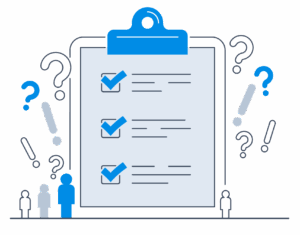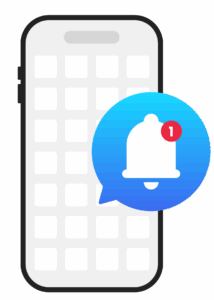
For many healthcare organizations, participating in standardized patient surveys like HCAHPS is mandatory. These government-mandated surveys are supposed to help gauge true patient satisfaction and improve care quality. But in practice, they fail miserably.
 CAHPS surveys are long, outdated, frustrating monsters patients hate dealing with. As such, the response rates are dismal, feedback takes ages to collect and process, to say nothing about how incredibly expensive they are to administer. And, again, patients hate them. It’s a bad user experience all around. So while many hospitals and clinics must check the CAHPS box to satisfy regulatory requirements, the dirty little industry secret is that very few administrators, clinicians, or anyone else for that matter, actually relies on CAHPS surveys for real insights. This is textbook compliance theater, not a meaningful source for improvement.
CAHPS surveys are long, outdated, frustrating monsters patients hate dealing with. As such, the response rates are dismal, feedback takes ages to collect and process, to say nothing about how incredibly expensive they are to administer. And, again, patients hate them. It’s a bad user experience all around. So while many hospitals and clinics must check the CAHPS box to satisfy regulatory requirements, the dirty little industry secret is that very few administrators, clinicians, or anyone else for that matter, actually relies on CAHPS surveys for real insights. This is textbook compliance theater, not a meaningful source for improvement.
That leaves organizations scrambling for alternatives to actually understand their patients. Unfortunately, most of the other methods organizations undertake aren’t much better.
 Take text messaging, for example. It’s great for reminders: “Don’t forget your appointment” or “Bring your insurance card.” But when it comes to gathering meaningful feedback, it falls flat. Asking people to complete surveys via SMS feels impersonal and intrusive; the digital equivalent of shouting into a void. People associate texts with personal communication with friends or family, not institutional questionnaires. The result? Low engagement, low-quality data, and (once again) a poor experience for the consumer.
Take text messaging, for example. It’s great for reminders: “Don’t forget your appointment” or “Bring your insurance card.” But when it comes to gathering meaningful feedback, it falls flat. Asking people to complete surveys via SMS feels impersonal and intrusive; the digital equivalent of shouting into a void. People associate texts with personal communication with friends or family, not institutional questionnaires. The result? Low engagement, low-quality data, and (once again) a poor experience for the consumer.
![]() Then there’s the awkward in-person request where you’re trying to check-out at the front desk after a long visit, and one of the medical staff hands you a tablet to take a survey on the spot. Nobody wants to rate their experience while the staff they’re evaluating are staring at them. The chances of honest feedback at that moment are slim to none. Some organizations go even further off the rails and prompt patients for survey feedback during a visit. It’s intrusive, tone-deaf, and completely out of sync with the patient’s mindset.
Then there’s the awkward in-person request where you’re trying to check-out at the front desk after a long visit, and one of the medical staff hands you a tablet to take a survey on the spot. Nobody wants to rate their experience while the staff they’re evaluating are staring at them. The chances of honest feedback at that moment are slim to none. Some organizations go even further off the rails and prompt patients for survey feedback during a visit. It’s intrusive, tone-deaf, and completely out of sync with the patient’s mindset.
Email is definitely the best, most effective method of outreach, but healthcare organizations too often botch the execution here as well. Messages almost always come from generic, auto-generated email addresses – not from a doctor, a nurse, or anyone the patient has actually interacted with. This sends a very clear message to the patient: “We really don’t care very much.” And if that’s the impression patients get, why should they care enough to respond truthfully or even at all?
The bottom line? The patient surveying process in healthcare is broken…badly. Other industries may struggle with feedback too, but no one does it worse than hospitals and clinics.
Click here to get in touch with us to learn more.
Reaction is a growth acceleration platform that companies use to easily manage client relationships, uncover new opportunities, and grow their business. Our platform is specifically designed to run client programs, manage employee feedback, gather critical market insights, increase mindshare, generate new business, and analyze existing data sources.